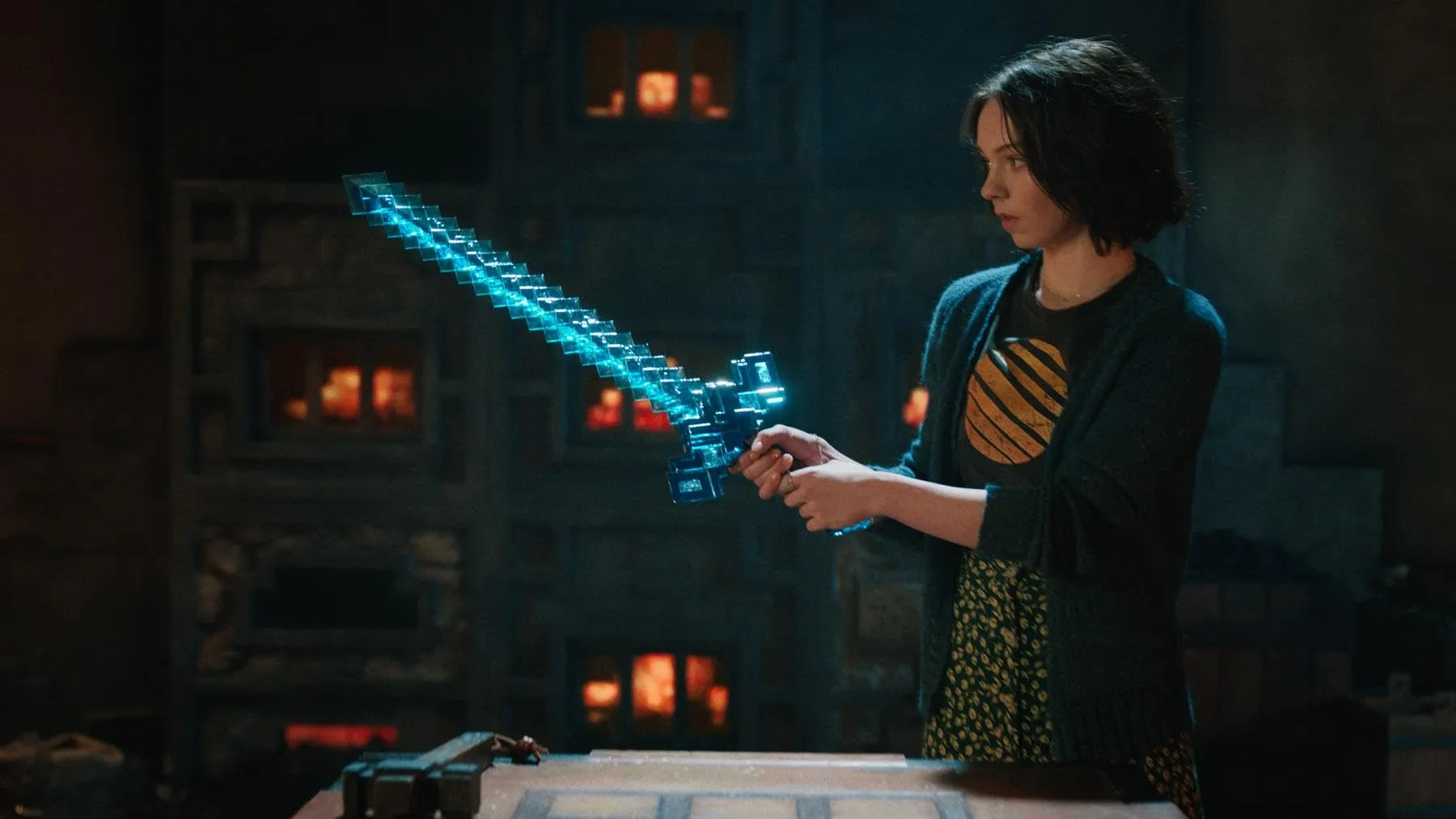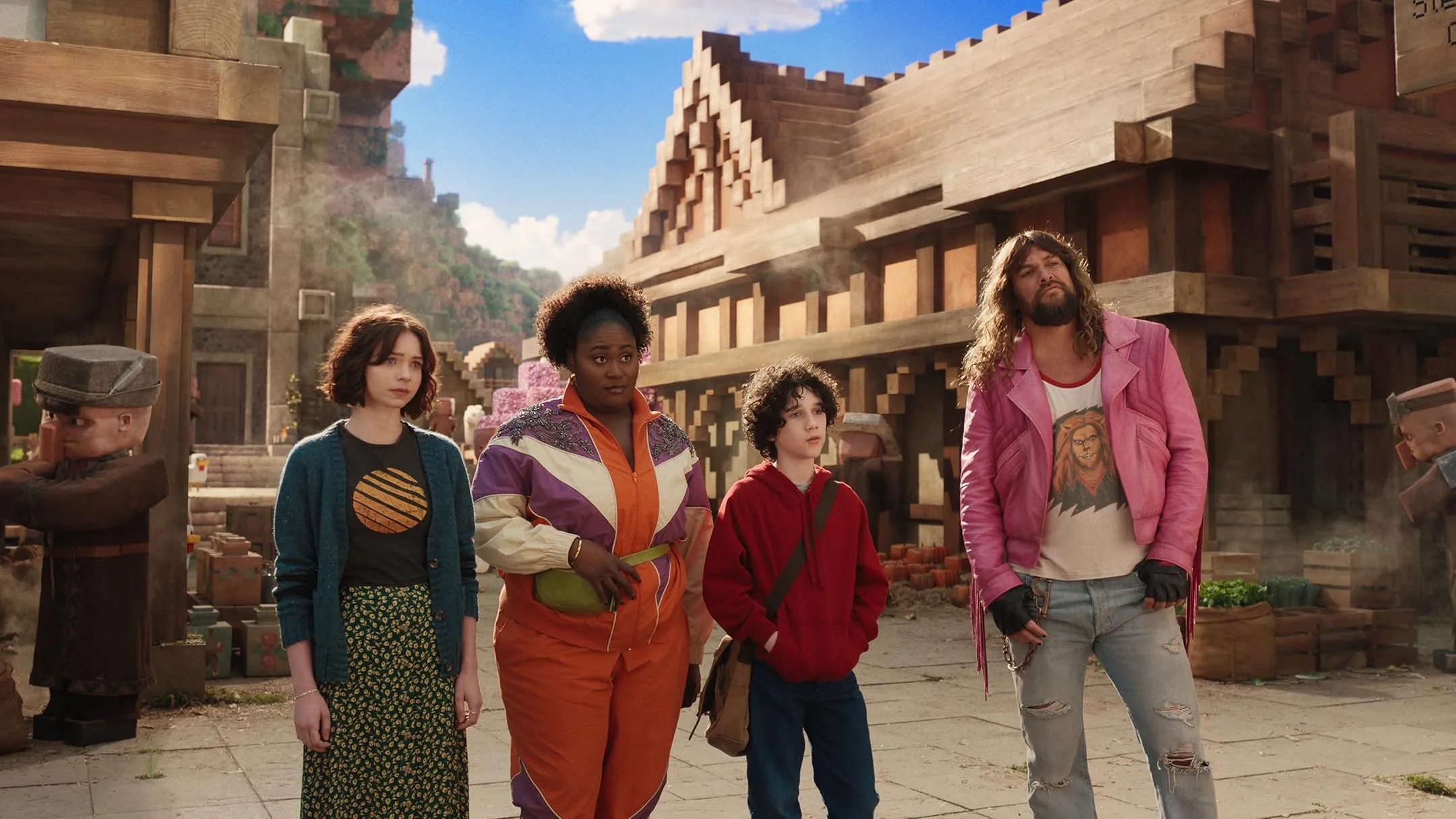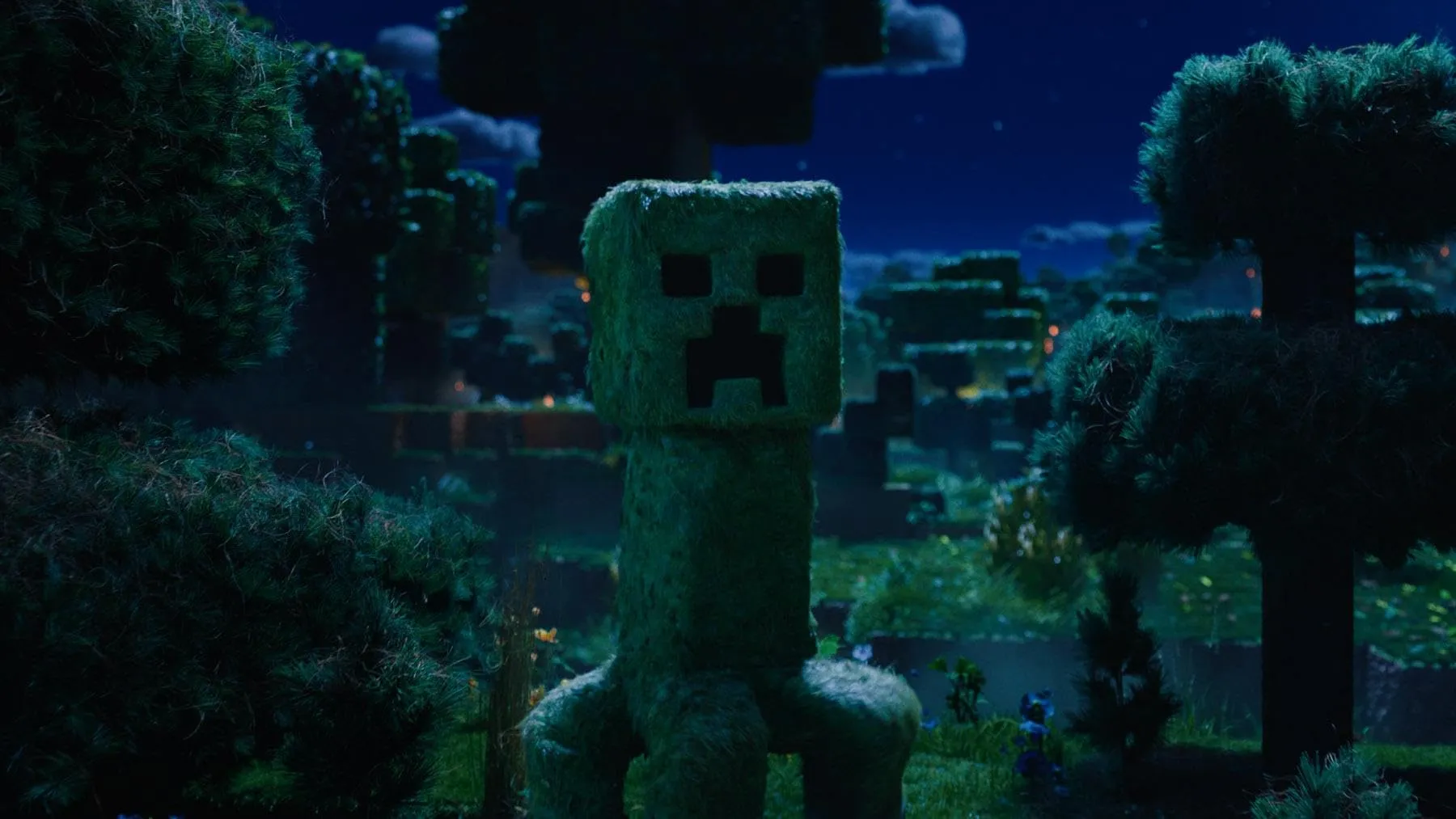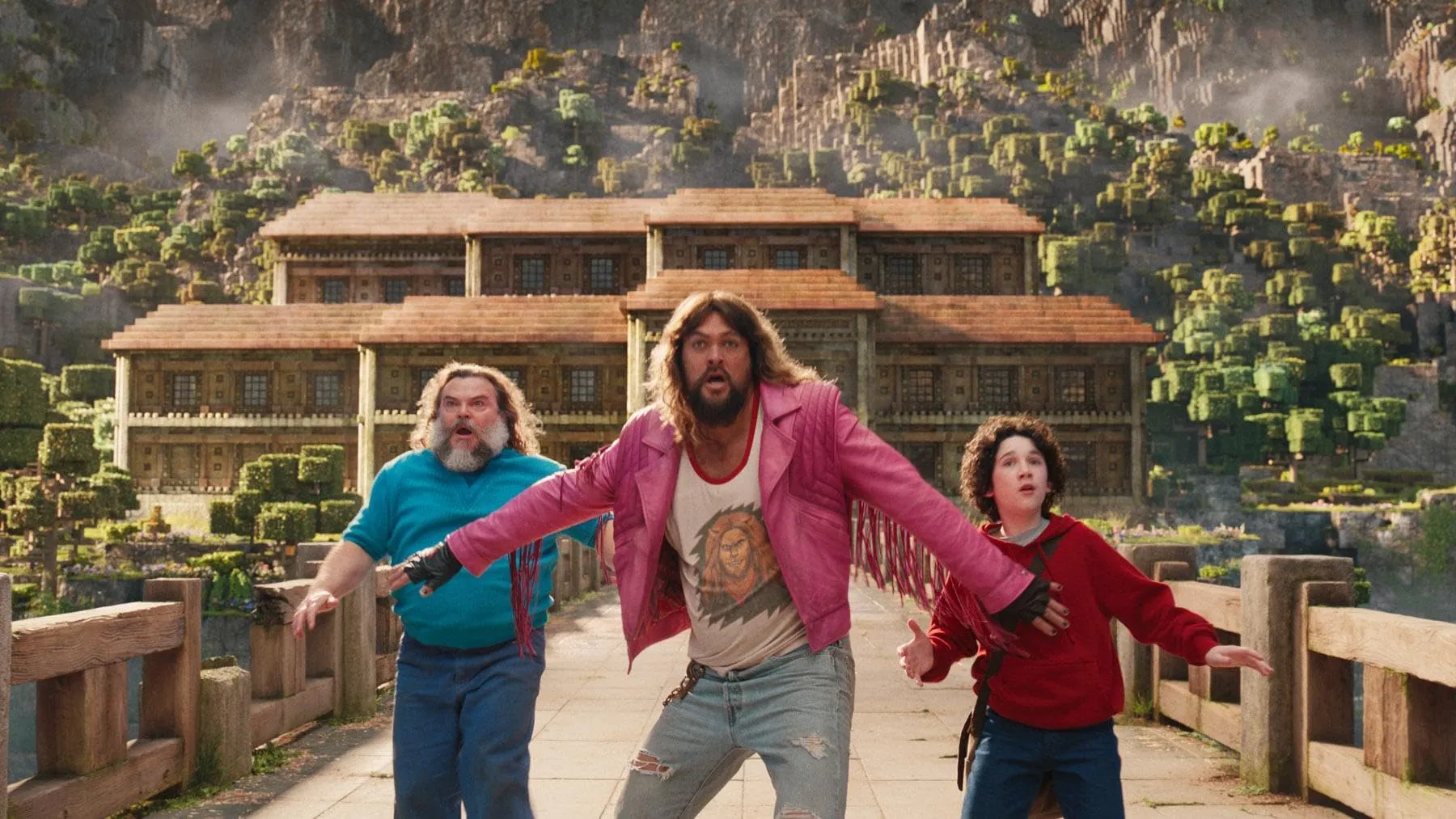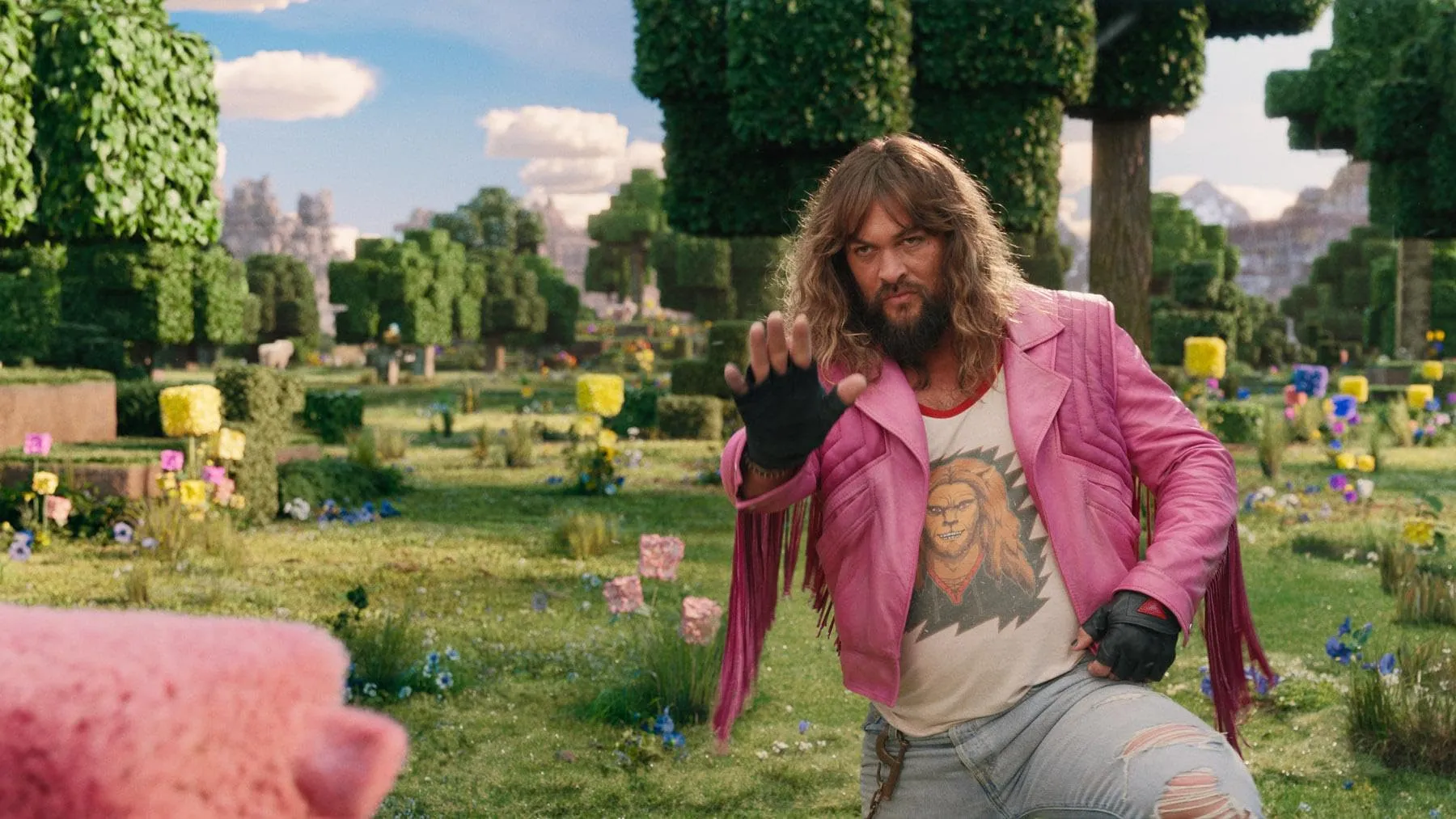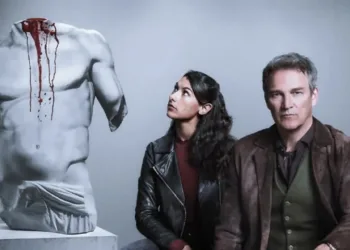In the film, an ordinary existence in a modest town in Idaho shifts abruptly into a pixelated realm defined by cubic structures and digital inventiveness. The narrative follows characters as they transition from a familiar, everyday environment to an expansive world built on the principles of creativity and open design. This melding of real-life portrayal with a computer-generated universe invites viewers to reflect on how artistic storytelling and interactive entertainment come together across different cultures.
The picture reinterprets a widely played game into a narrative adventure, reimagining its playful spirit while adopting a live-action framework. The setting in Idaho, with its earthy simplicity and local character, contrasts with the engineered precision of a block-built world. This pairing creates moments where traditional cultural motifs meet modern digital sensibilities, offering a space for discussion about the exchange of local heritage and global trends.
Scenes featuring rural iconography placed against the backdrop of structured, game-like architecture spark consideration about the evolution of cultural expression. These moments serve as reminders that entertainment can simultaneously reference a region’s history and embrace innovations born from a worldwide passion for digital play.
Plot and Story Structure: A Cross-Cultural Examination
From the opening scenes set in a modest American town, the film shifts into a digital universe constructed entirely of cubes. Early on, everyday characters are unexpectedly thrust into a realm where familiar physical laws give way to a world defined by crafted elements and imaginative obstacles.A magical portal acts as the gateway, separating the known life from an environment built on a system of creative challenges and unpredictable threats.
The narrative centers on the pursuit of a radiant artifact, a key element that promises to restore the characters to their previous reality while thwarting a rising malevolence. This pursuit unfolds across a sequence of episodic encounters, each presenting challenges that echo the mechanics of a celebrated interactive experience.
Characters engage in confrontations with animated foes, including skeletal figures and shadowy entities, each encounter drawing on motifs from traditional quests yet reinterpreted through the lens of modern digital culture.
The film’s structure interlaces moments of kinetic action with quieter intervals that unpack the inner conflicts and personal histories of its characters. Certain scenes offer a detailed look at the mechanics of the block-based universe, while others shift focus to individual struggles and unexpected relationships that surface along the way. The presence of a subtle romantic subplot and rich character backstories provides depth, illustrating how varied narrative threads coexist within the overarching adventure.
This narrative framework raises thought-provoking considerations regarding the influence of local storytelling traditions on a digital phenomenon recognized on a global scale. Specific sequences evoke comparisons with other works that reinterpret interactive experiences in live-action settings, prompting reflection on how narrative ideas transfer and transform across cultural and artistic divides.
Characters and Performances: A Global Mosaic of Archetypes
Steve begins as a modest door-salesman who finds himself assuming the role of guide in a world built from digital blocks. Jack Black’s performance presents Steve as a mentor figure with lively humor, creating moments that remind viewers of classic archetypes reinterpreted for a modern audience. His portrayal carries a spark that hints at regional storytelling traditions while engaging a crowd familiar with both live-action narratives and interactive digital experiences.
Garrett “The Garbage Man” Garrison emerges as a former pro gamer struggling to redefine his purpose. Jason Momoa embodies this reluctant hero with physical expressiveness and a playful mix of confidence and vulnerability.
His character, with its roots in nostalgic gaming culture, finds echoes in cinematic portrayals of misfits striving for redemption. The depiction of Garrett adds a layer that bridges the gap between traditional hero myths and modern digital legends.
Young characters Henry and Natalie play roles marked by personal loss and a search for creative expression. Their dynamic creates a channel connecting everyday experiences with the imaginative realm they encounter. Their story offers reflections on cultural narratives of youth, emphasizing resilience in the face of hardship while engaging with a world where technology reshapes old myths.
The film also introduces figures like the eccentric sorceress Malgosha, whose exaggerated traits offer a counterpoint to more grounded characters. Side figures, including a quirky real-estate agent and a surprising romantic subplot featuring a mute villager paired with a character portrayed by Jennifer Coolidge, add layers of humor and unexpected emotional beats.
Interactions among these diverse characters generate scenes filled with spontaneous exchanges and playful repartee. This collection of roles, drawn from a variety of cultural origins, provides a canvas where traditional storytelling meets modern entertainment. Such a mixture invites reflection on how familiar archetypes and inventive portrayals can coexist, challenging established narratives while presenting new ideas in character dynamics.
Visuals and Production Design: Reconfiguring a Pixel World
The film transforms a universe constructed from pixels and cubes into a living canvas that appeals to both fans of interactive media and lovers of cinematic storytelling. Recreating an environment where every tree, creature, and structure is defined by geometric simplicity demanded a creative mix of physical sets and digital imagery. This approach produces scenes that oscillate between a playful, almost childlike wonder and moments that hint at a subtle disquiet.
The arrangement of spaces, from the expansive digital fields of the Overworld to the shadowed corridors of the Nether, reflects careful design choices. Scenes featuring familiar game elements—such as the crafting table and the iconic diamond weapon—offer moments that spark recognition while presenting them in a context that surprises.
The use of a broad spectrum of colors sets apart the lively pixel universe from the more muted tones of everyday life, employing intense hues and surreal lighting to capture both the charm of childhood memories and the stark realism of modern production.
Artistic elements, including the luminous orb and the unmistakable cubic architecture, act as visual signposts throughout the film. These motifs echo themes of creativity, discovery, and transformation, turning abstract game symbols into markers of conflict and personal growth.
Several sequences stand out for their inventive camera work and imaginative set pieces; transitions through magical portals and orchestrated encounters with digital foes demonstrate a thoughtful integration of visual storytelling techniques with the inherent logic of a gaming world.
Each visual choice and design element reflects a synthesis of cultural influences, where traditional aesthetics meet modern digital innovation. This fusion of design strategies invites contemplation about the ever-changing forms of entertainment that continue to reshape familiar cultural narratives.
Sound, Score, and Musical Elements: Echoes of Digital Whimsy
The film’s musical landscape contributes significantly to its offbeat atmosphere, with a score crafted by talents including Mark Mothersbaugh that mirrors the film’s quirky visual style. The score underscores moments of high adventure and off-kilter humor, engaging the listener in a sonic environment that reflects both a sense of wonder and playful absurdity.
Noteworthy is the in-movie jingle, “Steve’s Lava Chicken,” performed by Jack Black. Its catchy rhythm and lighthearted delivery offer brief respites during action sequences, reinforcing the film’s mischievous tone. Such musical numbers serve as punctuations amid sequences that fuse narrative progress with unexpected comic relief.
Sound design further reinforces the connection to the game, with digital chimes and mechanical clicks evoking the familiar auditory cues of a virtual world. Ambient effects mirror the original game’s minimalist audio, transforming simple in-game sounds into an immersive auditory tapestry that complements the visual spectacle.
This integration of sound and music creates a sonic experience that enriches the film’s narrative, inviting viewers to consider how digital soundscapes and musical motifs can shape a cinematic portrayal of a cultural phenomenon.
Themes, Tone, and Underlying Messages: A Digital Allegory
This adaptation places creativity at the heart of its narrative, showing it as a vital tool for survival and self-expression that mirrors the original digital spirit. The film suggests that creative problem-solving is essential for overcoming life’s challenges, echoing the inventive nature of interactive media. Characters face obstacles by using wit and originality, emphasizing how individual innovation can shape personal destiny.
The film presents a mix of humorous absurdity alongside moments of heartfelt emotion. Physical comedy, cultural references, and playful dialogue combine to give the story a light-hearted air, while still inviting viewers to reflect on deeper experiences. The interplay of laughter and subtle sentiment creates a layered experience that resonates on multiple levels.
Steve and Garrett transform as they move between a familiar everyday world and an extraordinary digital realm. Their evolution represents a search for meaning and belonging in a setting where traditional values meet new technological realities. The narrative invites viewers to consider how an ordinary life can be reimagined through a playful digital lens, prompting thought on how this shift influences our ideas of self and society.
Direction, Screenplay, and Execution: A Digital Adaptation Reimagined
Jared Hess approaches this film with a distinct style that infuses familiar humor into a large-scale production. His methods evoke elements seen in his earlier works, blending quirky character interactions with lively pacing that mirrors the interactive nature of the source material. Hess’s vision appears to borrow from various cinematic traditions while honoring the playful logic of digital entertainment.
The script juggles several plot threads with a focus on visual storytelling. The dialogue carries a wry tone, using cultural references and spontaneous banter to express character traits and highlight absurd situations. Exposition about the digital mechanics is woven into exchanges that feel natural, rather than forced, creating moments where narrative intent and visual cues meet seamlessly.
The film faces the challenge of juggling lively set pieces and a multitude of in-jokes with a coherent narrative. Its energy appeals to fans familiar with the digital world and those enjoying a lighthearted family experience.
While some sequences may seem scattered, the risk taken in this ambitious adaptation stands out as a bold reinterpretation of a well-known cultural phenomenon. This creative venture leaves us to ponder the balance between traditional storytelling and innovative, screen-based adventure.
The Review
A Minecraft Movie
A Minecraft Movie is an unpredictable adaptation that fuses quirky humor and imaginative visuals into a lively, if uneven, cinematic experience. Jared Hess crafts a playful homage to the game, inviting both devoted fans and casual viewers into a vibrant digital world. While the film's pacing and narrative coherence waver at times, its bold reinterpretation and cultural nods render it a distinctive, if imperfect, offering.
PROS
- Creative visual adaptation of the blocky aesthetic.
- Energetic performances from the leads.
CONS
- Inconsistent narrative coherence.
- Overwhelming subplots and plot threads.









































